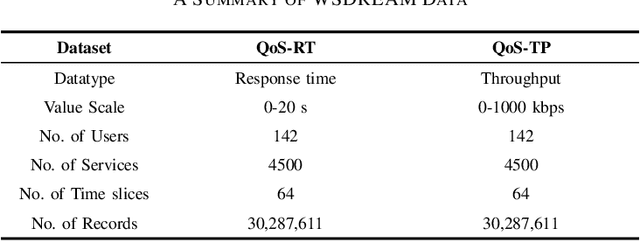Yikai Hou
Neural Canonical Polyadic Factorization for Traffic Analysis
Jun 18, 2025Abstract:Modern intelligent transportation systems rely on accurate spatiotemporal traffic analysis to optimize urban mobility and infrastructure resilience. However, pervasive missing data caused by sensor failures and heterogeneous sensing gaps fundamentally hinders reliable traffic modeling. This paper proposes a Neural Canonical Polyadic Factorization (NCPF) model that synergizes low-rank tensor algebra with deep representation learning for robust traffic data imputation. The model innovatively embeds CP decomposition into neural architecture through learnable embedding projections, where sparse traffic tensors are encoded into dense latent factors across road segments, time intervals, and mobility metrics. A hierarchical feature fusion mechanism employs Hadamard products to explicitly model multilinear interactions, while stacked multilayer perceptron layers nonlinearly refine these representations to capture complex spatiotemporal couplings. Extensive evaluations on six urban traffic datasets demonstrate NCPF's superiority over six state-of-the-art baselines. By unifying CP decomposition's interpretable factor analysis with neural network's nonlinear expressive power, NCPF provides a principled yet flexible approaches for high-dimensional traffic data imputation, offering critical support for next-generation transportation digital twins and adaptive traffic control systems.
Multi-Head Self-Attending Neural Tucker Factorization
Jan 16, 2025



Abstract:Quality-of-service (QoS) data exhibit dynamic temporal patterns that are crucial for accurately predicting missing values. These patterns arise from the evolving interactions between users and services, making it essential to capture the temporal dynamics inherent in such data for improved prediction performance. As the size and complexity of QoS datasets increase, existing models struggle to provide accurate predictions, highlighting the need for more flexible and dynamic methods to better capture the underlying patterns in large-scale QoS data. To address this issue, we introduce a neural network-based tensor factorization approach tailored for learning spatiotemporal representations of high-dimensional and incomplete (HDI) tensors, namely the Multi-head Self-attending Neural Tucker Factorization (MSNTucF). The model is elaborately designed for modeling intricate nonlinear spatiotemporal feature interaction patterns hidden in real world data with a two-fold idea. It first employs a neural network structure to generalize the traditional framework of Tucker factorization and then proposes to leverage a multi-head self-attending module to enforce nonlinear latent interaction learning. In empirical studies on two dynamic QoS datasets from real applications, the proposed MSNTucF model demonstrates superior performance compared to state-of-the-art benchmark models in estimating missing observations. This highlights its ability to learn non-linear spatiotemporal representations of HDI tensors.
Breaking the Context Bottleneck on Long Time Series Forecasting
Dec 21, 2024Abstract:Long-term time-series forecasting is essential for planning and decision-making in economics, energy, and transportation, where long foresight is required. To obtain such long foresight, models must be both efficient and effective in processing long sequence. Recent advancements have enhanced the efficiency of these models; however, the challenge of effectively leveraging longer sequences persists. This is primarily due to the tendency of these models to overfit when presented with extended inputs, necessitating the use of shorter input lengths to maintain tolerable error margins. In this work, we investigate the multiscale modeling method and propose the Logsparse Decomposable Multiscaling (LDM) framework for the efficient and effective processing of long sequences. We demonstrate that by decoupling patterns at different scales in time series, we can enhance predictability by reducing non-stationarity, improve efficiency through a compact long input representation, and simplify the architecture by providing clear task assignments. Experimental results demonstrate that LDM not only outperforms all baselines in long-term forecasting benchmarks, but also reducing both training time and memory costs.
 Add to Chrome
Add to Chrome Add to Firefox
Add to Firefox Add to Edge
Add to Edge